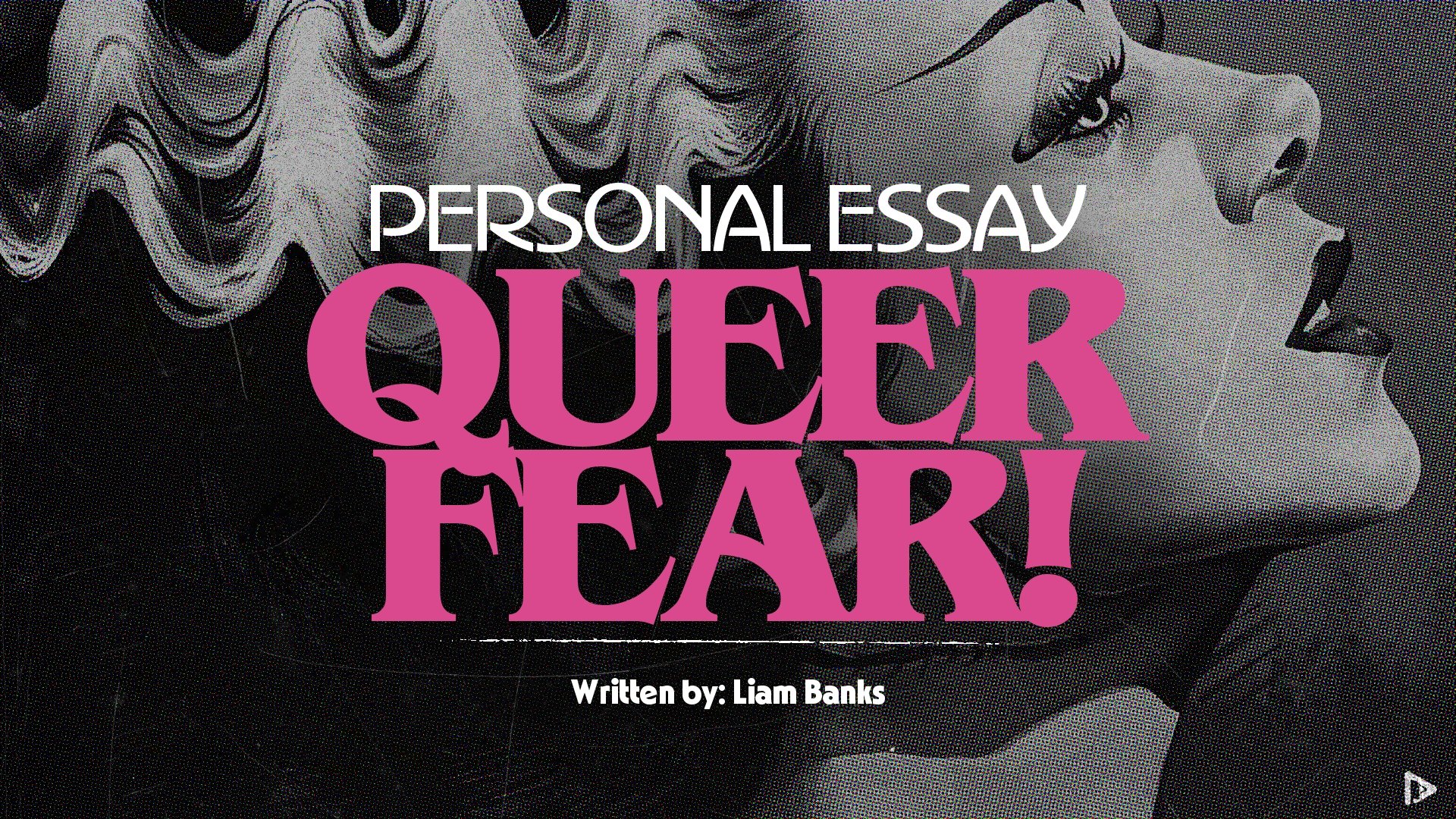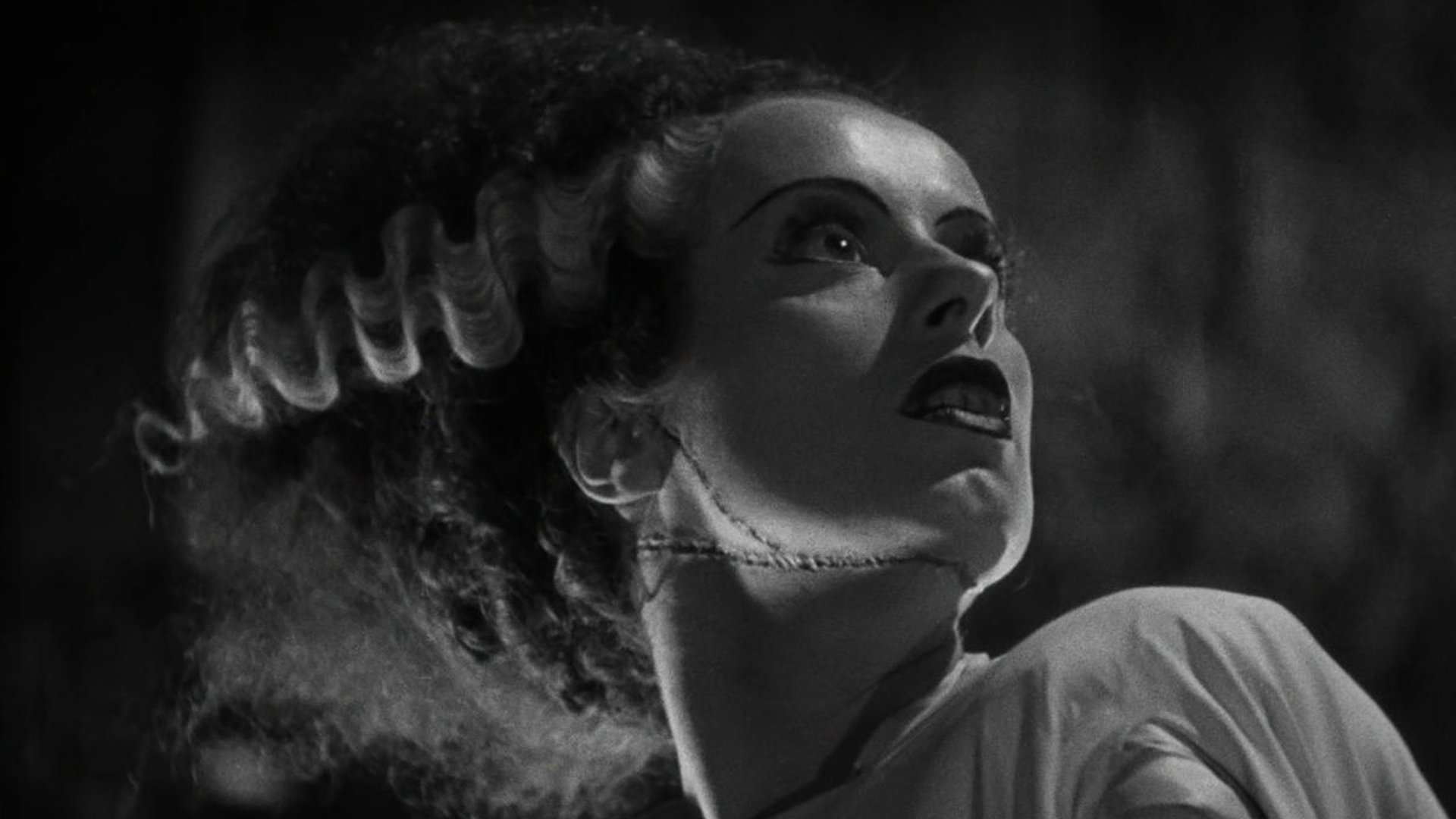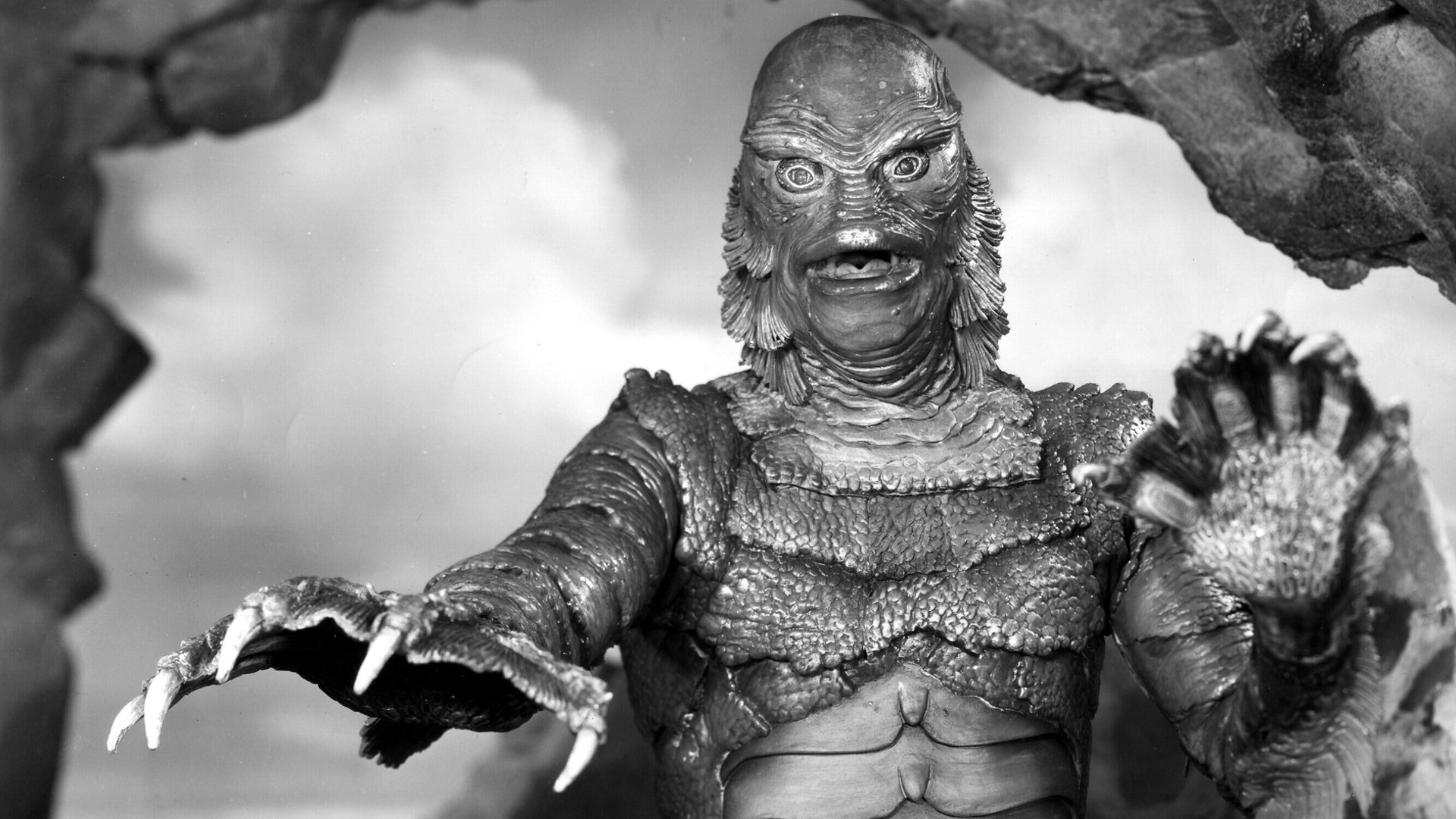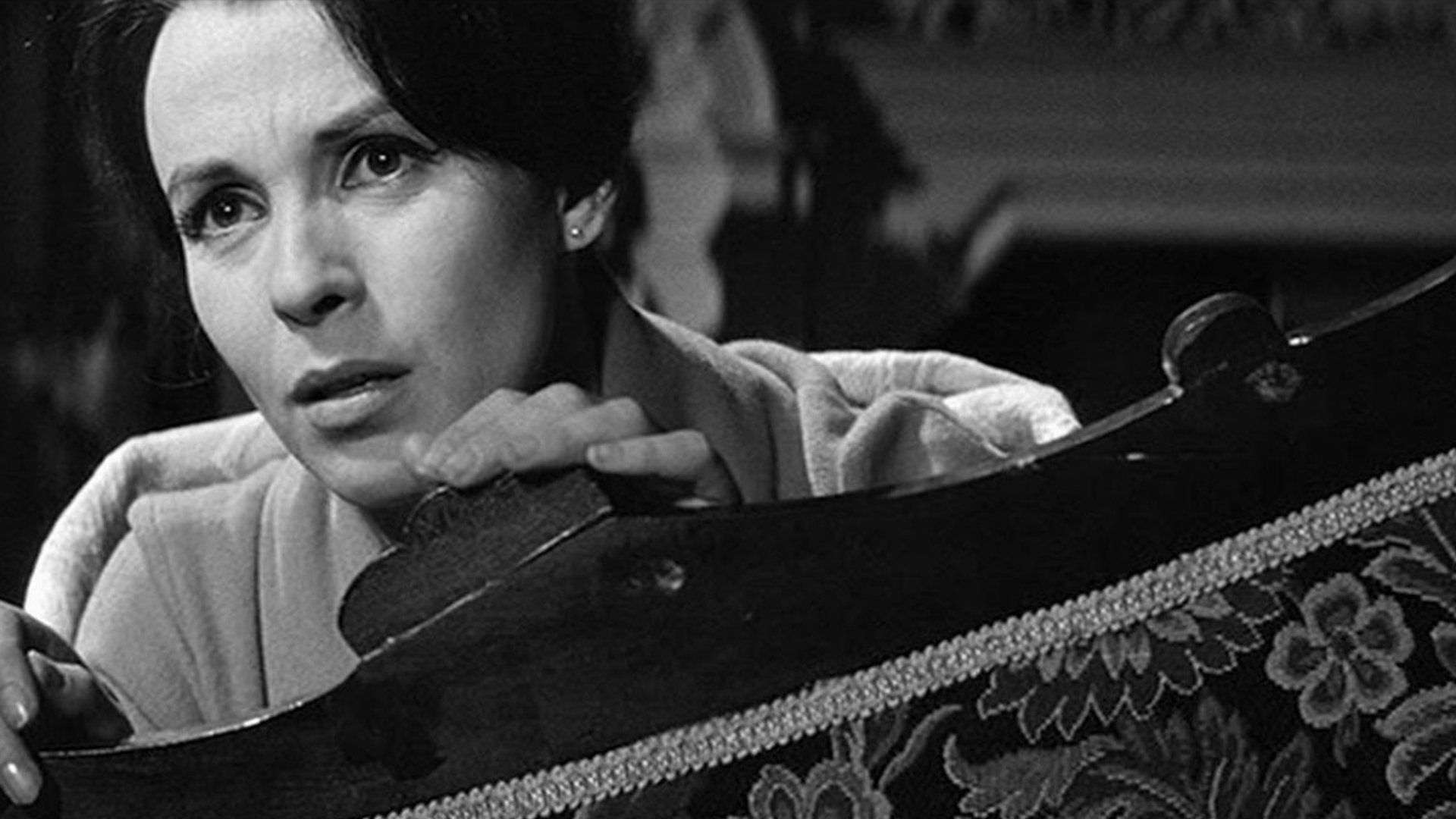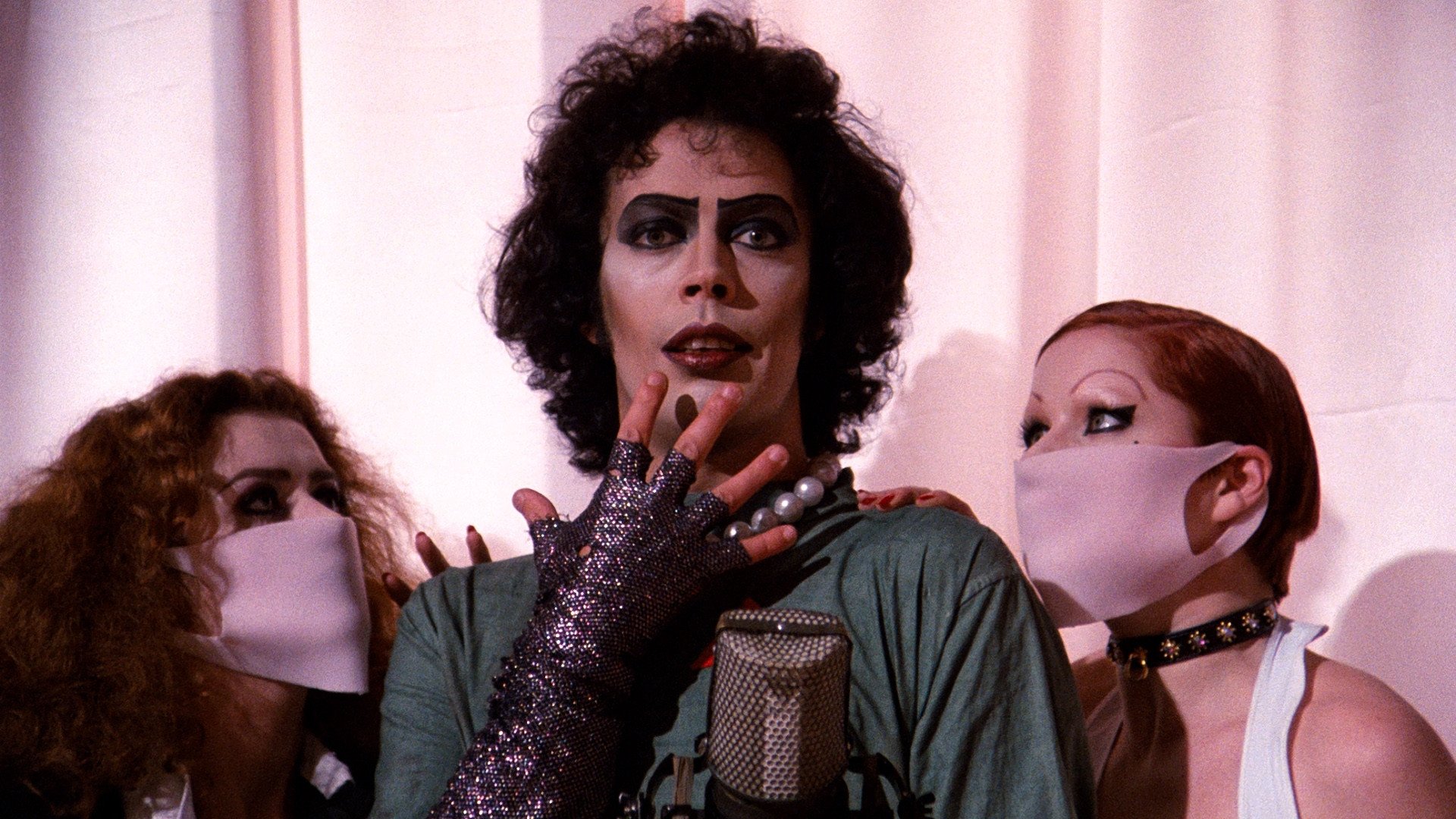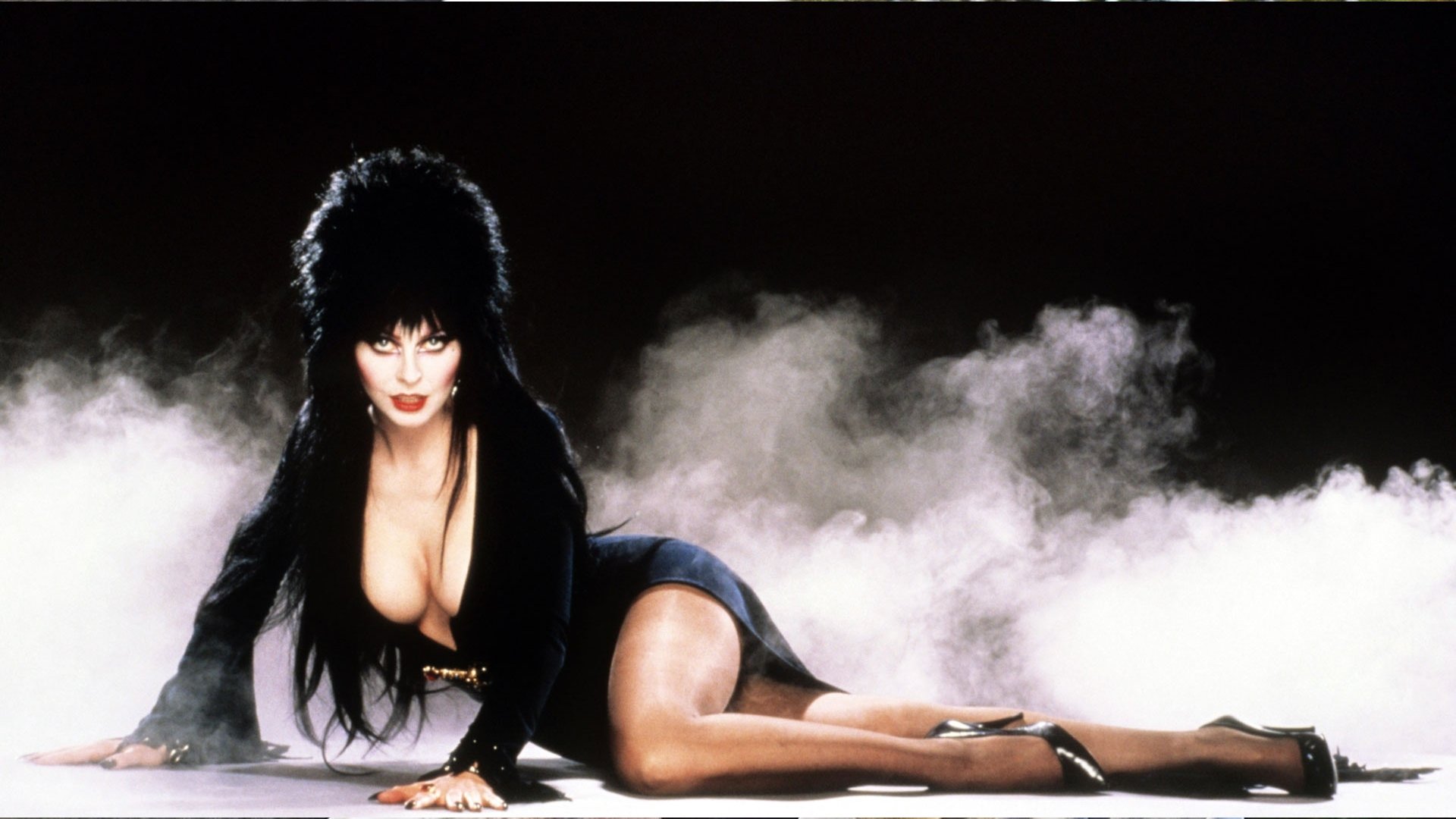QUEER FEAR - Horror History Essay.
As a member of the Queer Community myself, and in a bid to celebrate the close of Pride Month in my own way, I thought it was only fitting to put together a blog post that chronicles both Queer and Horror History as they intertwined through the last century. I was spoilt for choice when doing my research for this post as Horror has provided us with so many ‘Queer’ Creators and Films that have worked so hard to push boundaries and the visibility of Queer individuals and ideas into pop culture.
The Bride of Frankenstien – 1935, Dir. James Whale
Starting things off we have to travel back to the 1930’s. For a long time due to the ‘Hays Code’ Hollywood movies were shaped by a list of guidelines that kept movies from ‘corrupting’ the people who watched them. Any film that was made within the Hollywood System between 1934 and 1967 would be mandated to not ‘lower the moral standards of those who see it.’ Although homosexuality was never explicitly mentioned in these guidelines the subject of sexuality and sex in general was extremely taboo with ‘sex perversion or any inference to it’ being labelled as forbidden. This did not stop Queer creators and Queer characters from making an impact however and the Horror genre was as good a sandbox as any to play in.
Horror Cinema and Queer Culture have always had an interesting relationship, going right back to the very start of Hollywood. As a horror fan looking back to Horror’s humble beginnings my mind immediately conjures up images of the black and white tales of the Universal Monsters. The man behind a lot of these misunderstood creatures was Director James Whale, an openly gay creator who lived freely in a way that was virtually unheard of in the 1920’s and 1930’s. I might also add that these were the most prolific years of his career and where he stood to have the most to lose. Whale and his partner David Lewis lived together as a couple from 1930 to 1952, separating just a few years before his tragic death in 1957. Whale was responsible for some of the most iconic creations in the Universal Monsters Library directing Frankenstein (1931), The Invisible Man (1933), and The Bride of Frankenstein (1935). Whilst being true to himself and creating monsters that are still at the forefront of pop culture almost a hundred years later, it’s important to recognise that the genre would not be where it is today without the likes of Whale, living his truth.
The Creature from the Black Lagoon – 1954, Dir. Jack Arnold
Jumping ahead to the 50’s, Queer ideas were still creeping their way into the horror genre to be explored by audiences through cinema. The decade itself was a dark one for Queer people and the monsters that would often represent them on the big screen. Fresh from a decade of war the films produced at this time worked to ‘other’ the villains or monsters as something foreign or perverse. The image of the nuclear (hetero normative) family was rife and the real-world persecution of homosexuals was becoming a much bigger issue, forming the beginnings of organised civil rights movements. Both I was a Teenage Frankenstein (1957) and I was a Teenage Werewolf (1957)explored the ideas of Queer identity and the consequences of giving in to the ‘unnatural’ desires. In the former film Dr Frankenstein works to create a perfect specimen who just so happens to be a young muscular man. A man he holds total control over and insists calls him ‘sir’. Forming his creation he uses the body of a deceased track athlete and regularly watches his monster work out (shirtless). If ever there was subtext to read into this is definitely it. In the latter film mentioned we again follow a figure of science, Dr Brandon, who is helping a young man struggling with his sudden and beastly ‘urges’. Brandon suggests hypnotherapy and similar regressive treatments that are comparable to the treatments used to treat homosexuality in the real world. Ultimately the young man gives in to his urges, a clear metaphor for his sexuality and becomes the beast that the film is titled after.
Going back a couple of years, Creature from the Black Lagoon (1954), shocked and entertained audiences back in 1954. The film features my favourite of the Universal Monsters line up with Gill-Man, designed by the incredibly talented Milicent Patrick. Watching the film, it’s hard to not read it in a certain way as we follow a near all male excursion looking to discover a brand-new species. Gill-man himself also happens to be somewhat phallic in appearance, driving the men to continually disrobe and swim around together. The films central monster does not seem to be sexually motivated to capture Kay (the only female on board) but rather does so to worship her, literally placing her on a pedestal in his grotto, how a queer audience may worship a diva they admire today (in a more metaphorical sense of course). Gill-man’s most violent attacks only seem to be toward muscular and semi clothed men, literally rocking a poor man’s tent at the start of the film. Read into that what you will. Since its release CFTBL went on to spawn various sequels and indeed a musical version of the first film which is without a doubt one of the campest things I have ever seen, and I am here for it! Sadly it was cancelled soon after its release due to lack of interest but Gill-Man lives on as a queer icon to this day!
The Haunting – 1963, Dir. Robert Wise
This wouldn’t be history of Queerness if we didn’t jump to 1960 and Alfred Hitchcock’s Psycho (1960). The ‘Hays Code’ was to be withdrawn in this decade and in the real world civil rights movements, feminist activism and anti-war protests were on the rise. Horror is an incredibly unique genre in that it often personifies societies anxieties in the form of a monster or villain, letting the audience confront them in a safe way through the eyes of the film’s protagonist. As these very real-world issues came closer to home for most with the introduction of TV sets into the household, it made sense that the monster was no longer up in a castle on a hill but rather now the manager of a Motel on a quiet piece of road you might pass whilst driving. Norman Bates is driven mad by his relationship with women and the confusion he has with his own identity and gender. Talking to the skeleton of his dead mother, she still controls him from beyond the grave, telling him to murder the women who stay at the motel. Psycho is a staple of Horror Cinema and arguably features one of the Queerest antagonists in the genre’s history.
Only a few years after the release of Psycho came Robert Wise’s The Haunting (1963). Coming off of the back of the success of winning academy awards for ‘Direction’ and ‘Best Picture’ for West Side Story (1961) Wise ventured into the Horror genre with this classic flick. What sets this film aside from a lot of ‘Haunted House’ films of the time was the inclusion of an openly lesbian character. The character of Theodora (Theo) is not the villain of the film, a trope which often came with the inclusion of a Queer character, she in fact ends up being one of the films many highlights. This was almost unheard of at the time and it has been nice to see that in the more recent adaptations of the same source materialThe Haunting (1999) with Catherine Zeta-Jonesand Netflix’s The Haunting of Hill House Series (2018) the character of Theo has remained and continues to be a fan favourite. It seems right to also give an honourable mention to the inclusion of a same sex couple in the follow up series to The Haunting of Hill House, with Dani and Jamie in The Haunting of Bly Manor(2020) a true queer couple for the ages!
The Rocky Horror Picture Show – 1975, Dir. Jim Sharman
Cutting forward to the 1970’s now, Lesbian Vampires were all the rage as sexual liberation was the new thing! The Vampire Lovers (1970) from Hammer Films came just after the relaxation of the ‘Hays Code’ meaning filmmakers could get away with a whole lot more. The film itself is an adaptation of the book Carmilla first published in 1871, that tells the story of a young woman who is preyed upon by a female vampire. It took almost a century for the book to makes its way into the mainstream and that it did, with several adaptations of the same book being made in Spain with The Blood Splattered Bride (1972) and the Cult Classic Vampyros Lesbos (1971) a Spanish/German co production. All 3 films explore the power of female sexuality and do not hold back with their depiction of same sex seduction.
It wouldn’t be the 70’s if I didn’t mention The Rocky Horror Picture Show (1975). Probably the ‘Queerest’ film on this list! It is an absolute favourite of mine and it would appear to be the same for many other people. It currently holds the record for the longest running theatrical release in film history. Stemming from a musical stage play and spawning a sequel Shock Treatment (1981) the story of a Sweet Transvestite from Transexual, Transylvania still resonates with audiences worldwide. Whilst we don’t like to mention the sequel or the horrendous ‘Made for TV’ version that was unleashed upon us in 2016, I have to say if you get a chance to check this bad boy out live, please do! Just don’t forget your suspenders! Dripping with sexuality and references to the classic B Movies of yesteryear the film is an absolute blast! Tim Curry is fantastic in the role of Dr Frank N.Furter borrowing some of the plot from I was a Teenage Frankenstein (1957) (mentioned above) in constructing the perfect man in Rocky and seducing even the most ‘straight’ laced of characters in Brad and Janet.
The Lost Boys – 1987, Dir. Joel Schumacher
Finally, we reach the 80’s. Many will argue that this was the Golden Age for Horror, but was it a ‘Golden Age’ for Queer representation? Starting the decade, we had a film that can only now be seen as problematic, Brian De Palma’s Dressed to Kill (1980). SPOILERS – The film features Michael Caine as the story’s antagonist – a transgendered, sexually confused Doctor who wields a straight edge razor when he dresses as a woman to express his femininity. In doing so a murderous side of their personality is unleashed which is let loose on the woman and female patients the Doctor holds. There are obvious references to Alfred Hitchcock’s Psycho (1960) (mentioned above) but the ideas that the story works to push on the viewer are what date this film and could leave a bad taste in the mouths of a modern ‘woke’ audience. This isn’t to say that the film isn’t all bad, stylistically it is a great watch, it just doesn’t do much to help the representation of Trans people as anything other than monstrous.
Jumping ahead a few years we are once again in Vampire Territory. The 80’s brought with it the AIDS crisis so naturally as Horror does the fears of blood and disease were reflected back at us in ‘Vampire’ and ‘Body Horror’ films. Vampires throughout literature and movies have acted as Queer avatars by being general figures of seduction regardless of gender. Although an incredibly difficult time for the Queer Community the 80’s bought us some classic Vampire films. The Hunger (1983)starring Catherine Deneuve, David Bowie and Susan Sarandon in a vampiric love triangle still stands as one of the coolest and sexiest Queer horror classics of all time. Next came Fright Night (1985) another favourite of mine in this essay. Starring a different Sarandon this time, Vampire Jerry Dandridge played by Chris Sarandon moves into Charley’s neighbourhood. In a bid to fit in and avoid questions, Jerry actually poses as part of an upper-class same sex couple with his man servant Billy. It is actually interesting that the subject of Queerness is used as a disguise, albeit by the monstrous presence of the film, rather than something a character is ashamed of or struggling with. Fright Nightfeatures some great makeup and practical effects, a great take on the traditional vampire lore and of course a killer 80’s soundtrack. Bringing the decade of the Vampires to a close we have The Lost Boys (1987). Now other than some of the homo-erotic elements of the film I did not actually know that the film’s director Joel Schumacher identified as bisexual – now the more I think about it, Schumacher did sexually confuse a generation when he went on to give Batman nipples in Batman Forever (1995). The big hair and leather bar aesthetic brings with it flashes of Queerness. At the centre of the story, we have the character of Michael ultimately being seduced by David into a life of vampirism and rock & roll. Now we also have to mention Michael’s brother Sam. Probably the most on the nose Queer element/character of the film. Aside from the Rob Lowe pin up poster on his wall and his out-there fashion choices it was nice to see one of the films heroes lean into their femininity and defeat a monster that wasn’t their own sexuality rearing its ugly head.
The 80’s was indeed the golden age of the ‘Slasher’ so it wouldn’t feel right to not at least mention some of them that were layered thick in subtext and Queer issues. Sleepaway Camp (1983) is another film that perhaps hasn’t aged well with its surreal gender bending reveal in the final act. It does however still remain a Cult Classic and I think that is because the film had its tongue firmly planted in its cheek throughout, as opposed to the more serious tone and demonisation of a Trans character in De Palma’s Dressed to Kill (mentioned above). The Nightmare on Elm Street Serieswas another staple of 80’s Horror Cinema. The Sophomore entry can only be described as incredibly Queer. Since the film was released and fans have revelled in the not too subtle subtext of it all. A great documentary I’d highly recommend called Scream Queen: My Nightmare on Elm Street was released back in 2019 and is available to stream now. It details the trials and tribulations the film’s lead star Mark Patton suffered taking on the role of Jesse and how this one film shaped his entire life to this day. Featuring sequences of Freddy physically ‘coming out’ of his body, a rendezvous in a Gay Leather Bar and an erotically charged execution of Jesse’s Gym Teacher in the showers, there was no denying that this entry into the franchise was a bit ‘gay’. It seemed apparent that the filmmakers were trying to make Freddy Krueger a metaphor for the fear of Homosexuality in the youth of America at the time. For years the films screenwriter, who happens to be gay, David Chaskin denied that the motivations for a lot of the sequences were homo-erotic but has eventually confessed that fans were correct in their assumptions. From watching the documentary, it was hard to see how difficult it was to be openly gay when Nightmare on Elm Street: Freddy’s Revenge (1985) was released. Whilst I applaud the film for having a ‘final boy’ as opposed to a ‘final girl’ Patton’s career took a severe blow because of it. Looking back it is awful to realise just how much he was going through as a Queer man at that time amidst the height of the AIDS crisis. If you are able to check out the Scream Queen Documentary I highly recommend it.
Scream – 1996, Dir. Wes Craven
We’re slowly getting there as we come to the 90’s. The decade of my birth! Kicking things off, the decade didn’t have the best relationship with the Queer community starting with The Silence of the Lambs (1991). Now I have to admit I only watched this film recently and I will say that I really enjoyed it. You cannot deny that Anthony Hopkins and Jodie Foster(who publicly came out at the 2013 Golden Globe Awards) absolutely knock it out of the park as Dr Hannibal Lecter and Clarice Starling respectively. The issues come with the films antagonist, Serial Killer – Buffalo Bill. There are really clear themes of Transmisogyny and Transphobia, which led to protests taking place at the 1992 Oscars Ceremony by the activist group Queer Nation. It is a shame that even in a film that is hailed as one of the greatest pictures of all time, the films central villain is a gender confused murderer, demonising the Trans community in a similar way that Dressed to Kill did over a decade earlier. Progress takes time and I think cinema as a whole is a really great way to see how ideologies and perspectives can change. We will probably be talking decades from now about how problematic the current representations of Queerness are in media, but the key is to continue to learn and educate ourselves.
Vampires once again had to come and save the day, this time with the release of Interview with a Vampire (1994). The film garnered an immediate cult following that still remains as strong today as it was back then. Audiences lapped up the sexual tension between Tom Cruise’s – Lestat and Brad Pitt’s – Louis. Really a love story through the ages the film centres on the complicated relationship between the pair as they navigate their way through the centuries together and alone. Like most Queer films on this list the story is ultimately a tragic one, but one that should be seen all the same.
With the turn of the century came new ideas and new offerings for Queer Horror fans. Although not on the face of it Scream (1996) offers up a decent serving of Queer subtext. No surprise that it comes in the form of the film’s villains, Billy & Stu, and their homo-erotically charged killer friendship. It is hard not to read a little more into their relationship when the film concludes, so much so it was parodied brilliantly in Scary Movie (2000). It’s important to point out that the film(s) were also written by openly gay screenwriter Kevin Williamson, crafting one of the most successful horror franchises out there alongside Wes Craven. The franchise has enjoyed an audience through 4 canon films so far, 2 TV show adaptations both with MTV and a 5th film in the franchise is on the way next year! The TV Series’ were a bit more flagrant in their depictions of Queer characters with Audrey being a standout in the initial MTV incarnation. Scream 4 (2011) cleverly asked the question what would the killer do if a character were gay? Answer is they’d still get the chop! We are all for equality here! We cannot mention the Scream Series and not talk about the character of Sidney Prescott who has definitely become a Queer Icon in her own right through the years. Perhaps it might be because she is one of few ‘final girls’ to lean into her sexuality, actually do the deed and live to tell the tale? Don’t even get me started on Gale’s outfits and lewks throughout the series, a queen of reinvention right there!
High Tension/Haute Tension/Switchblade Romance – 2003, Dir. Alexandre Aja
We’ve hit the millennium now and start to explore what the 00’s has to offer. Queerness really started to come into its own in this decade, with popular TV Show’s featuring Queer storylines and characters. We were now much more easily seeing ourselves represented on the big and smaller screens. These characters were becoming the protagonists and driving the stories. No longer were the Queer folk the outcasts, the Serial Killers or the Demons plaguing our heroes, in many ways they were starting to become the heroes themselves. If you ask me it was about bloody time!
One of my favourite Queer Horror films of the 00’s was High Tension (2003), now entering into SPOILER TERRITORY – and very much contradicting my above statement, this film features one of the most divisive twist endings I have ever seen. Entitled Haute Tensionin France or retitled as Switchblade Romance in the UK (which has got to be one of the coolest titles ever by the way) the film tells the story of best friends Marie and Alexia. The two are followed and tortured by what can only be described as one of the grimiest and twisted Serial Killers out there. Visiting Alexia’s family, the pair are thrown into a game of cat and mouse as Alexia is captured and her family are brutally murdered at their secluded farmhouse. From the outset we can see that perhaps something more than friendship is driving Marie to rescue her ‘best friend’. Marie gets incredibly upset when Alexia mentions her sexual encounters with men, she spies on Alexia whilst she showers and then we cut to a quite intimate masturbation scene shortly after as Marie tries to confront her ‘honest’ feelings about Alexia. The kick in the metaphorical ‘balls’ comes toward the close of the film when it appears that Marie has defeated the killer that plagues them and reunites with Alexia. Alexia is terrified of Marie as we start to come full circle to the opening shot of Marie whispering to herself, battered and bruised in a hospital gown. Marie is the killer and responsible for the shocking murders we have seen throughout the film so far. Marie had manifested the films antagonist, perhaps as a psychological representation for her own sexuality and feelings toward Alexia. Rather than deal with her sexuality and the fear that comes with it, she becomes something more terrifying than being gay. Although another example of the ‘Monstrous Queer’ I feel this example also comes with a nod to the fear and trauma that a lot of Queer people feel when they have to come to terms with their own identity. Thankfully not all of us go full tilt psycho but the entire journey of self-discovery can be just as terrifying as any Serial Killer slashing their way through a horror film, and that is why it had to make this list.
The 00’s was also a decade of fun, reinventing some classic horror icons from the 80’s with a Queer twist. Chucky from the Child’s Play Series had been slicing and dicing his way onto the big screen since his debut in 1988. Chucky is up there with other Horror Icons such as Freddy, Michael and Jason when it comes to listing the greats and that’s no mean feat for a 2 ½ ft tall piece of plastic. With the entire series being written by openly gay creator Don Mancini he has maintained a continuity that is almost unheard of through a successful Horror Franchise. Parodying the likes of Bride of Frankenstein (1935) (Dir. James Whale – mentioned above) with Bride of Chucky (1998) we were introduced to Chucky’s partner in crime and love interest Tiffany. A Queer Icon in her own right she also featured alongside Chucky in Seed of Chucky (2004) which bought about the incredibly tongue in cheek introduction of Glen/Glenda. Now as an audience we are forced to take quite the leap to believe 2 plastic, voodoo possessed, killer dolls could reproduce. But, in a film that features one of the greatest cameo’s ever from none other than John Water’s (one of the finest and ‘filthiest’ Queer Filmmakers out there) many leaps are taken with logic in this picture. Glen is a misfit, not possessing the killer instinct of their parents. Confused about their gender, Chucky struggles to come to the realisation his son might not be a son at all when Glen is reveals herself as Glenda. Not a conventional film by any means I have to applaud such a popular Horror Franchise for bringing Trans representation to the masses, and although in the form of a killer doll’s offspring, let’s face it Chucky and Co are the heroes of the film and we just love to watch them ‘slay’.
Although touched upon briefly with High Tension (2003) above, Foreign and Independent Cinema has always been a cornerstone for Queer representation and a depiction of unfamiliar ideas to western audiences. Let the Right One In (2008) a Swedish Vampire export, was critically acclaimed at the time of its release, spawning a US Remake with Let Me In (2010). Although not as on the nose as some of the other films featured in this essay, LTROItells the story of Oskar a troubled young boy who falls in love with a mysterious young girl Eli who moves in just next door. Simultaneously the film is both gorgeous and sinister showing effortlessly that love can transcend so many boundaries. A perfect example of this comes when Eli reveals to Oskar that they aren’t a young girl at all but rather a roughly 200 year old Gender-Queer Vampire. Unbothered that Eli won’t be his ‘girlfriend’ but rather something else, Oskar still asks if they can be together. United by a sense of ‘otherness’ the pair find solace in their companionship and the film ends with them vowing to continue to protect each other.
Raw – 2016, Dir. Julia Ducournau
Breaking our way into the 10’s we stay with foreign cinema as we feature again another of my favourite films from the last few years with Raw (2016). Another French entry into my ‘Queer-Fear’ list, Raw is an elevated example of what Queer Horror Cinema can be. With key themes of sexual exploration and cannibalism, this coming-of-age film packs an unexpected bite. Pun intended. Looking back we saw a ‘Teenage’ version of pretty much every monster figure in the 1950’s. The 70’s and 80’s bought with them a conveyor belt of schlock, featuring the likes of cannibalism right at the top of the list. The coming-of-age story is a timeless one. Raw somehow ties all of these tropes together under a beautifully Queer lens, whilst never feeling cheap or exploitative. Our protagonist Justine finds herself awakening in more ways than one when she starts her studies at Veterinary School. Eating meat for the first time she develops an uncontrollable hunger to continue eating meat, cue the cannibalism. Being thrown into the ‘University Experience’ she begins to awaken sexually, exploring her body, other people’s bodies and starts to challenge established gender dynamics. All with the help of her unapologetically gay roommate. This is a rare example of a film that is unashamedly Queer, but it isn’t the films whole identity or purpose. Raw just happens to feature Queer ideas and authentic Queer characters. To me that is the best kind of Queer Horror.
Although going back a bit on the timeline it wouldn’t be the 2010’s if we didn’t cite the accidental Queer Hero of the decade, The Babadook (2014). Now this film, or rather the film’s title character, had to be mentioned after an apparent mishap at Netflix HQ. The Babadook seemingly started to appear on the ‘LBGTQ+ Films’ suggestions category for Netflix Users back in 2017 leaving us all #baba-shook. Like most things these days a picture of the mishap blew up on twitter and a Queer Icon was born. Now was the screenshot real? Was it photoshopped? Do we really care? This was just another brilliant example of Queer audiences embracing Horror as the two cultures naturally bleed into one another so often. Also as a side note, you will never convince me that the B in LGBTQIA+ does not just stand for bisexual, but also maybe Babadook too!
Elvira: Mistress of the Dark – 1988, Dir. James Signorelli
Wrapping things up it is important to also feature some honourable mentions that didn’t quite make the cut. Elviraherself from Elvira: Mistress of the Dark (1988), other Various TV Specials, films and cameos needs no introduction, she is and will always be an Icon. With her image a perfect amalgamation of 50’s Campy Character Vampira, The Addam’s Family matriarch Morticia and the hair and boobs of the 80’s she has well and truly stood the test of time, embracing her Queer fans to this day! The Hellraiser series sprang from the mind of Queer Writer and Filmmaker Clive Barker, celebrating the films’ central gang of leather clad sadists in various sequels and mediums since their first outing. Playing in a world of pain and pleasure the Cenobites look like a twisted caricature of Queer BDSM Culture. Cut to the 90’s Buffy the Vampire Slayer literally slayed her way onto our small screens, telling the story of Buffy Summers dealing with her fate as the ‘chosen one’ a lot of Queer viewers could relate to her struggle with her identity and pre-destined battles. The show was bold enough to regularly tackle Queer storylines and ideas in a time when it still wasn’t the ‘trendy’ thing to do. Tackling a central character Willow coming to terms with her sexuality it was great to watch her friends rally around her as she started a wonderful relationship with her girlfriend Tara. After the success of Juno (2007), Writer Diablo Cody shifter her focus to teenage horror with Jennifer’s Body (2009). Starring one of the hottest actresses at the time, Megan Fox brilliant brings a demon-possessed, high school cheerleader to life who also happens to ‘go both ways’.
Queer representation has never really felt out of place within the Horror Genre, or at least that is how it has always felt to me. Everyone’s experience will be different, that is the beauty of it I suppose. In closing, it became clear to me whilst writing this essay, that Horror has provided me with so much comfort throughout my own life and helped me confront my own issues with identity. Why was it that I identified so often with the ‘final girls’ on screen when I myself am a cis-male? On a subconscious level why did I enjoy watching the jock and dumb blonde get slaughtered after they showed the world how ‘straight’ and ‘normal’ they were? Horror is a safe space for us all to ask those sorts of questions. Identify with the unconventional and explore new ideas. On the face of it the genre is often regarded as nothing more than unintellectual nonsense, made cheaply to be enjoyed by the unhinged. But if you dare to take a close look the reality is that it’s probably the most intelligent and progressive genre out there. Indeed, a good portion of it can still rely heavily on stereotypes and formula, but as this essay suggests we get those gems that still shine through decades later. These films light the way for Queer Audiences and fellow Queer Creators out there who are just starting to discover the Genre and to discover themselves too. That is what Horror is all about, and there is nothing to fear in that!


